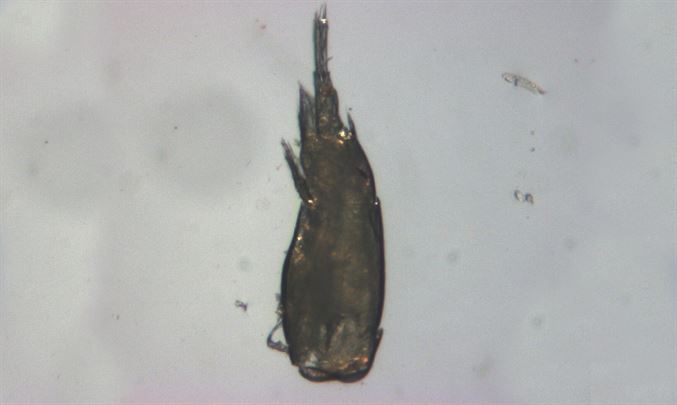The male of this species can be quite challenging to identify. Typically, they are distinguished from C. concinna based on their larger size, with C. gibbula individuals being notably bigger. In contrast, the female of this species exhibits more distinctive characteristics. These include the presence of 2 plumose or spiny setae at the base of the second antenna (A2). The prosome, the anterior part of the body, is divided into two segments, and its points are shorter than half of the genital somite. Additionally, there is a dorsal hump on the second prosome segment. The prosome is about 2.5 times longer than the urosome, which is the posterior part of the body. A beak-like keel can be observed on the ventral surface. The fourth pair of swimming legs (P4) has no trace of an endopod, featuring only one naked seta at its base. The urosome is one segmented and has somites about 1.7 times as long as the caudal rami. The middle part of the genital somite is swollen, with the widest section below the midpoint. The proximal ventral part of the genital somite is adorned with numerous hairs. Notably, the caudal rami are over three times longer than they are wide. These specific characteristics help distinguish males from females within this species.
